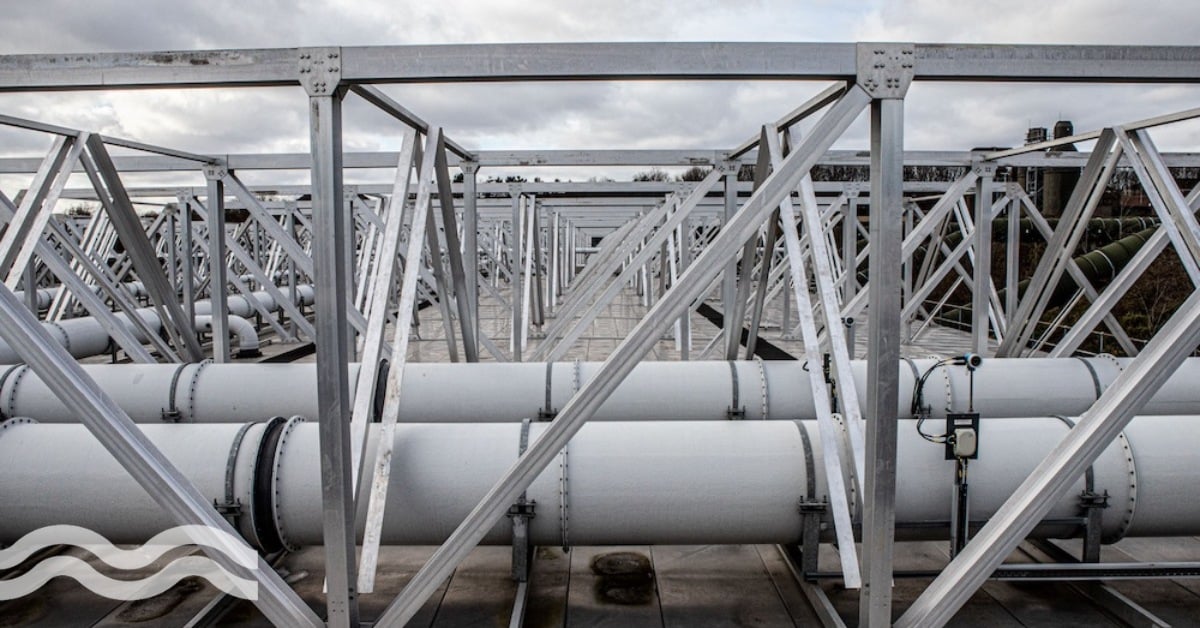Case study: Combining old and new to solve Jerusalem’s water challenge

When it comes to maintaining a city's water networks, Hagihon faces a challenge that few other utilities have to contend with. Supplying water to Old City in Jerusalem comes with some rather unique obstacles but one that is being made easier thanks to leak detection and water monitoring.
Ancient issues causing modern-day problems
Old City, Jerusalem, Israel, is a UNESCO World Heritage Site and is divided into the Christian, Muslim, Jewish, and Armenian quarters.
Hagihon provides more than 220,000 cubic meters of drinking water to a population of around one million people. It operates over 1,300 km of pipelines that runs throughout Jerusalem.
Most of the pipeline under Old City was laid during the early 1970s and is made of either galvanised iron or steel.
The water loss in the Old City district metered areas (DMA) ranges from 9.5 per cent to 19 per cent depending on the DMA.
Over the centuries, the city has been conquered, destroyed, rebuilt, and conquered many times throughout its history. As a result, the soil beneath the city is made of layers of ruins built up over the course of 3,000 years.
“Most of the pipeline under Old City was laid during the early 1970s and is made of either galvanised iron or steel.”
Because of this, when leaks occur water infiltrates through the layers of ruins and soils - which can take a long time. Once it has made its way through those layers it will appear on the surface.
As a result, leaks can last for prolonged periods of time before they are detected and even then it is difficult to locate the source of the leak.
Not as easy as replacing a pipe
Hagihon also faces another unique challenge. As a historical and religiously important site, it is never just as simple as replacing a pipe.
If a new pipeline needs to be constructed to replace an old one, Hagihon will need to place a temporary line above the ground because there is no space to put a new permanent pipe next to the old one.
Furthemore, permission is required from the police and city council, as well as authorisation from the Israel Antiquities Authority, the East Jerusalem Development Company, and the Committee for the Preservation of Gravesites. While permissions are being obtained from the various parties, the leak continues to leak water.
Leak detection offers salvation
To better manage its leak problem, Hagihon has turned to software company, TaKaDu.
Back in 2018, an undetected leak was discovered by chance after the water had come through the floor in a home. Prior to this, both Hagihon and TakaDu had recorded an increase in water loss. However, due to a lack of acoustic loggers in the area and the city's other challenges, there was no way to find the source of the leak.
" They fix problems faster and at a lower cost, and improve their customer satisfaction as they improve the network uptime.”
It was only after a car accident broke a paving stone that the source of the leak was uncovered.
"Utilities tend to adopt multiple solutions hence we encourage our customers to share with us information from their other solutions, knowing that information is vital when analysing incidents and events,” said Udi Geismar, VP enterprise solutions at TaKaDu.
It is by having this endless stream of new information from consumers that a unified portal can be created, where Hagihon can see where leaks are, flow increases and track water loss.
Not just leak detection
Hagihon is alerted to sudden flow increases and estimated water loss.
In one instance, an unexpected flow increase event was detected with a water loss being measured at 11 m3/hr. Using the TakaDu city management portal, Hagihon was able to find the source of the leak in one of its service pipes.
Three days later the pipe was fixed, with a total estimated water loss of about 600 cubic metres.
Geismar told Aquatech: "When adopting our philosophy, utilities become proactive in their water network approach, they need fewer resources to address the same volume of work..
"They fix problems faster and at a lower cost, and improve their customer satisfaction as they improve the network uptime and deliver water at an adequate pressure and water quality."
Old City faces unique challenges compared to other water utilities. Yet it is one that is being solved with leak detection technology that makes use of consumer data so that Hagihon can better understand its water.


